Jindara Townsend Handleiding
Bekijk gratis de handleiding van Jindara Townsend (8 pagina’s), behorend tot de categorie Heater. Deze gids werd als nuttig beoordeeld door 46 mensen en kreeg gemiddeld 5.0 sterren uit 23.5 reviews. Heb je een vraag over Jindara Townsend of wil je andere gebruikers van dit product iets vragen? Stel een vraag
Pagina 1/8

Townsend Freestanding
GPN: 236791
Rev A
Townsend Freestanding
Operation & Installation Instructions
Please keep these instructions for future reference.
15
1. Subject to clauses 2 & 3 of this warranty, A.F. Gason Pty Ltd ACN 004 667 556 warrants the following components of its heaters against defect in
workmanship and/or materials for the following periods from the date of purchase:
a. The rebox for ten years;
b. The paint nish for a period of 12 months if the purchaser has followed the instructions provided by Gason in the Operation and Installation
Instructions manual; and
c. All other components for 12 months except the glass, re brick lining or bae plates if, in the opinion of Gason, these items have been damaged by
impact.
2. This extended warranty does not apply;
a. If the heater has been purchased from a person who has not been authorised by Gason to sell its products;
b. If, in the opinion of Gason, the heater or any other component has been subject to abuse, misuse, alteration, modication or has not been installed,
operated, or maintained in accordance with the instructions provided by Gason; or,
c. To owners other than the original purchaser.
3. If you believe that the heater you purchased contains a manufacturing defect and you wish to make a claim under this warranty, please contact an
authorised Gason service centre to arrange for an assessment.
4. If, after assessing the heater Gason determines that the heater contains a manufacturing fault, Gason may at its own discretion:
a. Replace the heater;
b. Repair or replace specic components of the heater; or
c. Provide a full refund.
5. Parts replaced under warranty are warranted for the balance of their original warranty period.
6. If, at the discretion of Gason the heater or any parts need to be replaced, serviced or repaired at an authorised Gason service centre, then the person
claiming under this warranty must pay all costs associated with:
a. Returning the heater; and
b. The delivery or collection of any new or repaired heater.
Our goods come with guarantees that cannot be excluded under the Australian Consumer Law. You are entitled to a replacement or refund for a major
failure and for compensation for any other reasonably foreseeable loss or damage. Your are also entitled to have the goods repaired or replaced if the
goods fail to be of acceptable quality and the failure does not amount to a major failure.
Any benets you receive under these warranties are in addition to other rights and remedies that you may have as a consumer under law in relation to the
heater to which these warranties relate.
These warranties are given by:
A.F. Gason Pty Ltd
Blake Street
Ararat Vic 3377
Please contact us if you have any queries on:
Phone: 03 9763 3200
or email us via the “Contact Us” section of our website: www.gason.com.au
A.F. Gason Pty.Ltd. reserves the right to modify or alter specications, materials, etc. in the interest of product improvement.
WARRANTY

Townsend Freestanding Townsend Freestanding
!WARNING
READ AND FOLLOW THESE INSTRUCTIONS FULLY AND CAREFULLY
BEFORE INSTALLING AND USING THIS APPLIANCE.
To aid heater installation, remove door, bae system, and rebricks to reduce
overall heater weight. Refer to the set-up section of this manual.
!WARNING
Safety warnings
• A ue re with resulting damage may occur if the appliance is not
installed and maintained as per this booklet.
• Never place combustible materials such as wood, paper or furniture near
the appliance.
• This appliance is designed to burn dry hardwood. Do not burn
rubbish, driftwood, ammable liquids, pressurised canisters, or any
substance containing salt or corrosives.
• This appliance must not be installed and operated in an area where
kerosene, petrol, paint thinners, or other ammable liquid is used or stored.
• The ue system must be inspected and cleaned annually or sooner if
required. Failure to do so could result in excessive build up of creosote
which may result in a ue re, which may damage the ue or cause
damage to your home.
• The surface of the appliance becomes hot during operation. Do not
touch the surface of this appliance. Keep children away from the
appliance during operation. Do not allow anyone to operate this
appliance who is not familiar with this instruction booklet.
!WARNING
Paint curing and care
• Your heater is coated with the best available heat resistant paint. Even
though the paint has been baked after application, it may require further
temperature curing. It may discolour if you overre the heater on its rst
re. Please follow these instructions carefully to ensure the quality of the
paint on your heater is maintained.
• For the rst two or three rings, never exceed Medium air setting and
do not load the re more than half full. Do not use softwood fuel (cut up
pallets etc.) other than for kindling when rst lighting the re.
• Ensure that the lower air slide is fully closed once the re is established
during the curing process.
• On the initial re up you may detect smoke coming from the paint nish,
and from any oils that may be impregnated in the steel of the rebox.
This is normal. It is suggested to well ventilate your home on the initial
re up.
• Do not wipe the heater while the paint is curing. After the paint has
cured, the only maintenance required to maintain the heater’s nish is
to wipe it with a soft cloth (with water if necessary). DO NOT USE ANY
COMMERCIAL CLEANERS OR SOLVENTS ON THE PAINT FINISH.
• We are proud of the presentation of our products. If at any time you need
to freshen up the paint, your local Jindara dealer has touch-up
paint available for purchase.
The heater is painted in Stove Bright Metallic Black - Paint code 6309.
If you have any enquiries, please contact the dealer from whom you purchased your heater.
PLEASE COMPLETE:
Dealer Name:
Dealer Address:
Email: Phone:
1 14
Troubleshooting + Tips
• Sluggish or Lazy Fire
• A sluggish or lazy re can be caused by a number of dierent factors, or a combination of several factors.
• Ensure that the wood you are burning is of good quality, and has been well seasoned to ensure its moisture
content is below 16%. Overly wet wood will cool the re, smoke excessively, and cause your unit to run poorly.
The best way to determine the moisture content of your wood is to use a digital moisture meter. Wood that looks
dry on the outside can still be high in moisture on the inside.
• Ensure that there is not a negative pressure inside your house. Wood burning res consume air as part of the
combustion process. They need a constant supply of air to function correctly. If your home is overly sealed and air
is unable to get to the re as needed, it will create a negative pressure inside the house compared to the outside,
which will cause your re to smoke and run poorly. Running extraction fans in your kitchen or bathroom can also
impact on this in well sealed modern homes. The best way to test for this is to try opening an external door or
window near the heater while it is running, to determine whether it runs better with ready access to outside air.
• Non-standard ue installations can also cause your re to run poorly if not correctly installed. The addition of
bends and elbows in the ue will restrict the ow of ue gases more than normal, meaning that you may need to
t an additional length of ue in order for your heater to draw properly.
• Environmental factors such as consistent wind, structures or vegetation near the ue outlet, or other unforeseen
factors can have a dramatic impact on the performance of your heater. These can usually be overcome by tting
an extra length of ue, or through the tment of a specialty cowl such as a wind chaser or a vertical discharge
cowl.
• Ensure you are putting enough wood in your re. Modern replaces are designed to run hotter and cleaner than
older designs. This means that they perform best when they are well stocked with wood and have a hefty bed
of hot coals. You will become familiar with the unit as you use it, and learn what sort of operation best suits your
needs and wood type. As a general rule it is best to start out by building a big re and then reducing the fuel load
to a level that you nd suitable for your needs. This allows the ue to reach an appropriate operating temperature
for it to draw properly from the beginning, which will promote an active re and good heat output.

Townsend Freestanding Townsend Freestanding
Jindara Townsend Installation
!WARNING
THE INSTALLATION OF THIS APPLIANCE MUST BE CARRIED OUT AS PER THIS
MANUAL AND THE FLUE MANUFACTURER’S SPECIFICATIONS.
WE RECOMMEND THAT YOU USE A QUALIFIED INSTALLER TO CARRY OUT
THE INSTALLATION OF THIS APPLIANCE.
EXTREME CARE SHOULD BE TAKEN WHEN HANDLING THE APPLIANCE.
If you have any other enquiries regarding installation of the appliance, please
contact the dealer from whom you purchased the heater.
Installation
Scope Of Installation Specifications
The Jindara Townsend is tested in accordance with the requirements of AS/NZS 2918:2018 for the congurations
and ue types specied in this manual. Any installation that falls outside of the specications in this manual other than
the addition of bends or extensions to the ue, is considered to be an untested installation as per AS/NZS 2918:2018.
AF Gason Pty. Ltd. accepts no liability whatsoever for the safety of installations under such circumstances.
AF Gason Pty. Ltd. accepts no liability whatsoever for any interpretation of AS/NZS 2918:2018.
It is important that you understand these installation instructions and minimum clearances to combustible
materials before selecting a position for your wood heater, to ensure a safe and correct installation is achieved.
Installation Permit
Depending on your local authority requirements, a permit may be required for the installation of your heater. It is your
responsibility to arrange the same.
Flue Requirements
As per the dimensions in Table A (referencing gures 1 and 2), the Jindara Townsend must be installed with either of the
following ue types:
• Standard 6” Decromesh Default Flue Kit incorporating an additional 900mm high x 180 degree stainless steel rear
ue shield tted between the Decromesh and the active ue, or
• 6” Half shield Default Kit (Double Sleeve Flue Kit).
NOTE THAT INSTALLATION CLEARANCES ARE DIFFERENT FOR EACH FLUE TYPE.
The ue system installed with the Jindara Townsend must comply with Australian and New Zealand installation stan-
dards AS/NZS 2918:2018, and be installed to the ue manufacturer’s instructions.
The performance of your heater is highly dependant on an eective ue system. In many cases, poor start-up, dirty
glass, down draft causing smoke spillage when the door is open, and reduced heat output, can all be caused by the ue
system being too short or incorrectly installed. Excessive ue length is also undesirable, as it can cause excessive ue
draft, resulting in short burn times and over-ring of the heater.
Clearance To Combustibles
The Jindara Townsend conforms to AS/NZS 2918:2018 when positioned in relation to combustible surfaces as specied
in Table A (referencing gures 1 and 2), and as per these instructions. The gures shown state the minimum distance the
heater can be placed in relation to any combustible materials - plaster, wallpaper, timber, MDF, etc.
In the instance that your Jindara heater is surrounded by non-combustible materials - brick, stone, concrete, cement
sheet or similar, wall clearances can be reduced to 50mm. A 50mm clearance is required to ensure room air can circulate
around the wood heater during operation.
For further information regarding installation of your heater, please contact the Jindara dealer from whom you
purchased the heater.
Hearth & Floor Requirements
If the Jindara Townsend is to be installed onto a combustible oor, a cement sheet or similar non-combustible hearth
or oor (as per specications on page 3) protector must be placed in between the appliance and the combustible oor.
Minimum hearth requirements are specied in Table A (referencing gures 1and 2).
If the heater is to be installed onto a non-combustible surface that meets the minimum oor protector requirements
specied, an additional oor protector may not be required.
13 2
Troubleshooting + tips
• Air Controls Jamming
• Check that there are no visible physical obstructions to the air slides, such as charcoal or wood.
• Try freeing the air slide using WD-40, or a similar lubricant. It may be necessary to remove the air plates and gain
access to the air slides, in order to clean out any debris or contamination contributing to the jamming.
• Heater Emitting Smoke
• It is normal for your wood burning heater to emit a certain amount of smoke when the door is opened during
operation. Smoke will move in the path of least resistance as it rises from the re, and when your heater door is
opened, the opening becomes that path of least resistance.
• It is important that you adhere to the instructions in this manual, and that the heater is operated with the door
closed at all times, except for when you are lighting the re, or refuelling.
• A sluggish or lazy re will generate more smoke than an active hot re. If you have shut your re down for a long
burn, more smoke will be generated when you open the door.
• If you nd that your re is emitting noticable amounts of smoke into the room during normal operation, or
excessive amounts of smoke when the door is opened, check that the baes are correctly tted and in good
condition, and that there are no other visible defects with the heater. If there is no problem found with the heater
itself, there is more than likely a problem with your ue system and you should have it inspected by a plumber
for blockages or downdraft.
• No Overnight Burn
• Check that the air slides are not stuck open, and that the upper and lower air plates are xed securely to the door.
• Ensure that the baes are correctly installed and are free from any damage.
• Ensure that the door rope is sealing against the door opening, all the way around the door opening. This can be
checked by placing a strip of paper between the door and the rebox and closing the door, then checking to see
if the paper is clamped in place or free to move. If the paper is free to move, you will need to inspect your door
seal and either replace the rope or adjust your door catch.
• Ensure that you have a reasonable ash bed in the base of your rebox. The ash bed acts as a heat store, and helps
to maintain hot coals once the re has burnt low.
• Ensure that you are loading your re with good quality hardwood, and in sucient quantities for an overnight
burn. You should try to ll the rebox as much as possible when loading for an overnight burn, with large logs at
least 15cm in diameter.
• Round logs with smooth outer surfaces tend to take longer to burn when compared to logs that have been split
from larger pieces and have exposed rough surfaces.
• Excessive Ash Build Up
• Dierent types of wood will generate dierent amounts of coals and ash, depending on its composition and on
how you use the heater. Given the variety of wood available in Australia, you will need to determine which wood
is available to you that best suits the heater.
• All testing and certication for wood heaters sold in Australia is carried out using seasoned River Red Gum,
which is an energy dense hardwood. Red Gum burns hot with large coals that reduce to very little ash, and is the
recommended wood in ideal circumstances.
• Depending on what wood is available to you, you may nd that your rebox builds up with ash more quickly than
desired. This is unfortunately a function of the wood being burnt, not the heater itself.
• Ensure your wood is well seasoned and not overly sappy. Good hardwood with moisture content below 16% is
ideal.
• Burning bark will generate excessive ash, try to avoid burning it.
• Consistently running your re with the air slides shut down will generate excessive coals and ash, as well as
creosote build up. Burning a hot re will help to reduce these back down after a couple of cycles.
Product specificaties
| Merk: | Jindara |
| Categorie: | Heater |
| Model: | Townsend |
Heb je hulp nodig?
Als je hulp nodig hebt met Jindara Townsend stel dan hieronder een vraag en andere gebruikers zullen je antwoorden
Handleiding Heater Jindara

9 Juli 2023

4 Juli 2023

1 Juli 2023

28 Juni 2023

20 Juni 2023

13 Juni 2023

12 Juni 2023

8 Juni 2023

31 Mei 2023

31 Mei 2023
Handleiding Heater
- Wilfa
- Toyotomi
- HeatStar
- Termozeta
- Renkforce
- Omega Altise
- Brivis
- Medisana
- Carson
- Sonnenkonig
- Sun Joe
- Unold
- XPower
- Midea
- Chauvet
Nieuwste handleidingen voor Heater
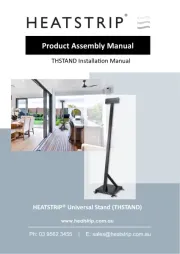
29 Juli 2025

29 Juli 2025
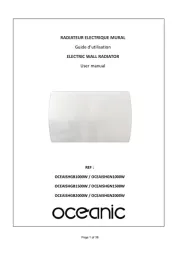
29 Juli 2025
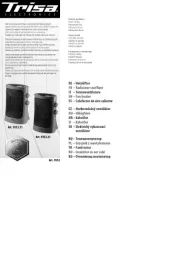
29 Juli 2025
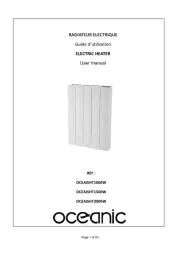
29 Juli 2025
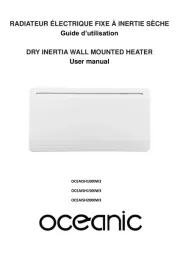
29 Juli 2025
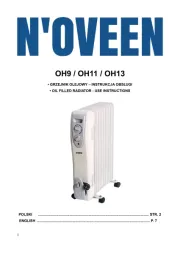
29 Juli 2025
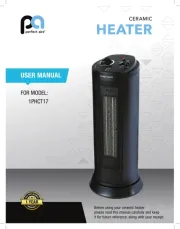
29 Juli 2025
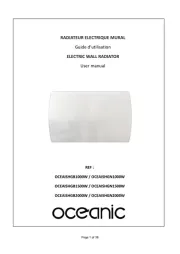
29 Juli 2025
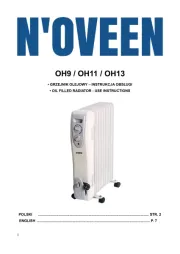
28 Juli 2025